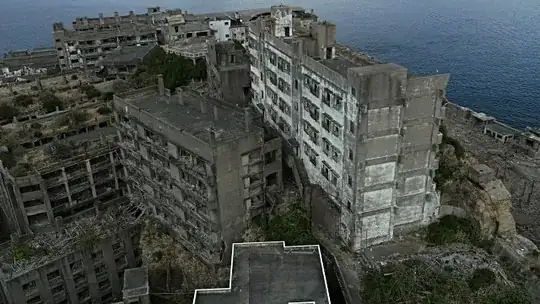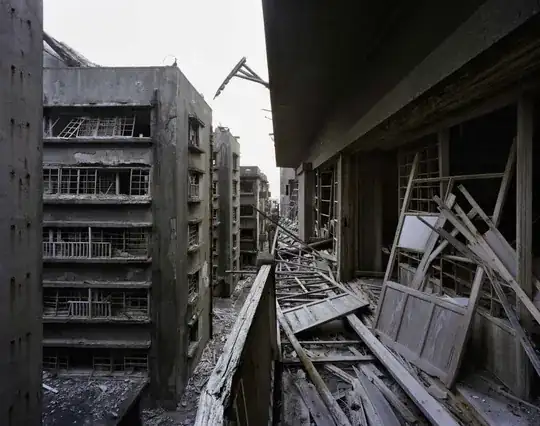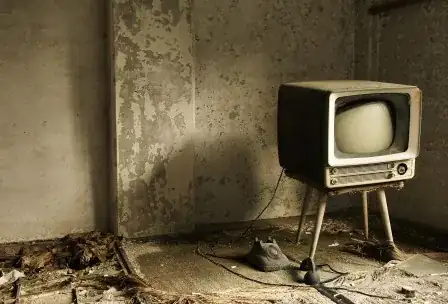A quick google search tells me that the size of the island is 597 sq miles. That makes it a large island. Now let us concentrate on your question.
The first thing that would happen after the apocalypse is that the service stations would cease working. That is to say, the electric power station(s) and phone system would stop working within a few weeks of the disaster.
Scavenging for foodstuffs and other supplies would mean that the malls and stores would be the first to suffer. Humans have an inexplicable urge to stock up on supplies even when there is no need for them.
Considering that the small population of few hundred people cannot maintain the sewerage and drainage system of whole cities, the drainage pipes and sewers would get clogged within a decade and become dysfunctional. This means that during and after the rainy season, the streets would have knee-deep water in them for weeks.
The standing water will also gradually weaken the base of buildings through moisture. Moss and lichen would start growing on the walls within a few years and creepers would take root wherever any hint of soil is present within wall creeks and roofs.
Grasses will start growing on the edges of roads and pavements within a few years, followed by small shrubs.
The grasses and shrubs, combined with annual heavy rains and lack of repair, will gradually begin to damage the roads. The tarmac will begin to tear off, exposing the filling below. As the tarmac tears off, more grasses and shrubs will take hold, accelerating the process.
Unattended wooden houses would be the first to break apart and be ruined. Considering the warm, moist climate, I think most houses will start getting soggy within a few years and be ruined within a decade.
Concrete buildings and skyscrapers, with their very sturdy metallic skeletons and weather proof paints, will resist the longest. Initially, the paint layer would peel off (in a decade) and then the cement and building blocks would start falling here and there. After about seven decades or so, mostly the metallic structure would be left standing, with parts of concrete and building blocks attached here and there. Note that this would happen to the outside walls of the skyscrapers. The roofs would begin caving in after about five or six decades (a guess, based on the composition of materials used in roof construction and climatic conditions of the island). So after a decade, you would find the exterior of most multi-storey buildings softened up with metal core showing here and there. The inner parts would be mostly intact, but with fungi and mushrooms growing in all moist places.
While the electric and phone services would have long since stopped, the poles and cables would still be present at places, even after 100 years. They will be extremely rusty and weak, but it will take somewhat more than a century to completely rust away the rust-resistant poles and cables.
If zoo cages are opened after the apocalypse, you would find many types of animals thriving on the island. This would include herbivores like deer, rabbits and small bison/buffalo herds and carnivores like leopards, wolves and alligators.


